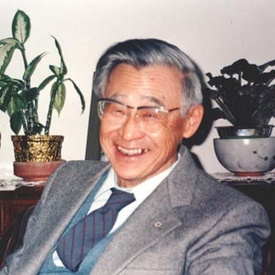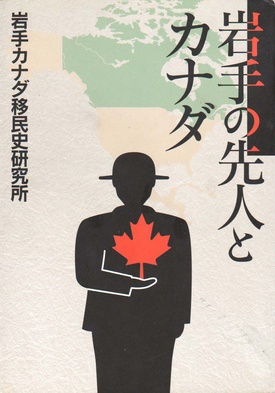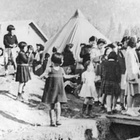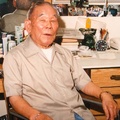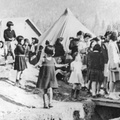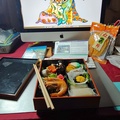After World War I, Japan joined the League of Nations and the Anglo-Japanese Alliance was annulled. The extension of the Anglo-Japanese Alliance was strongly opposed by the British Dominion of Canada. Canada distanced itself from Britain, strengthened its autonomy, and placed greater importance on friendly relations with the United States for its security.
Japan’s growing economic and military power and blatant expansionism already posed a threat to the Western powers. It may have been a natural consequence that their vigilance was amplified by their sense of racism, and that the brunt of it was aimed at the Nikkei community in North America.
In the 1920s, the British Columbia (BC) government suspended 40% of Nikkei fishing licenses so that many fishermen lost their licenses. Jiro Inoue of the Haney Agricultural Association took in the unemployed, saying, “It’s a shame for the Japanese community to have a dropout.” However, his goodwill will return a favor with harm. Former fishermen turned against Christianity and assimilation of the Haney leaders, and founded Buddhist churches. This meant the breakup of the traditional Haney community, which had been negative about Japanese cooperation during the war.
On the other hand, the Japanese Association in Vancouver received financial support from the Consulate under the pretext of “guarantee rights.” Etsuji Morii, the manager of the gambling house Showa Club, established an “emergency committee” within the Japanese Association, and collected aluminum foil, medical supplies, and care packages for soldiers. Going against the U.S. ban on exports to Japan, he secretly sent those items there. It wasn’t that RCMP didn’t spot that. War historian Jack Granastein, author of Mutual Hostages, wrote that British Columbians’ hate against Japanese Canadians was at the edge of the mountain so that “internment was necessary to protect Japanese Canadians.”
In October 1940, however, based on the testimonies of Thomas (Tom) Kunio Shoyama, Editor-in-Chief of New Canadian, and Takaichi Umezuki, Secretary-General of the Japanese labor union (also editor of Japanese Canadian Minshu), the BC State Special Advisory Committee concluded that the popular rumors of “disloyalty” and “underground operations” were “not seen among Japanese Canadians.”
In January 1942, after the outbreak of war between the United States and Japan, a representative of the RCMP reported, “several of the suspected operatives have already been imprisoned, and there is no need to arrest any more Japanese Canadians.” Nevertheless, by the end of February, a series of emergency decrees were issued by Cabinet decision; The more severe policies included not only the forced relocation of all Nikkei, but also the disposal of Nikkei’s property (including houses, land, and fishing boats). Behind the “confiscation” of movables and immovable properties on the grounds of “protection,” there was the ultimate goal of deporting Japanese Canadians from Canada.
It is an undeniable fact that there was a “unjust policy based on racism” that became a point of contention in the later Redress movement.
Nikkei community newspapers were the only source of information for the Issei who could not speak English, but in Japan, several news agencies were integrated into Domei Tsushin (the Allied News Agency) to centralize external news. The Nikkei community followed the maneuvers of the Japanese government, which was expanding into Asia under the guise of liberating Asia from the rule of the Western powers. In 1937, when the devastation of the Nanjing Massacre was reported in the newspapers, the Chinese community in North America held a rally in support of the Kuomintang (the Chinese Nationalist Party). North American society’s anger at Japan quickly turned into discrimination against Nikkei.
Meanwhile, the Japanese government did not sit back and keep silent. In order to disseminate Japan's assertions overseas, they funded English newspapers in various places. Japanese American Nisei journalist Bill Hosokawa himself admits that he used to be involved in the Japanese government funded newspaper. In fact, the Canadian consulate did the same thing.
In the chapter of Iwate no senjin to kanada (Iwate Predecessors and Canada, 2007), “Concerning the publication of the New Canadian newspaper,” Professor Takaiku Kikuchi shared private correspondences exchanged in the 1970s between Tokusuke Ogawa, who was the Vice Consul at the time of the war, and Koichiro Okihiro, a Nisei living in Toronto. “As the China incident spread, criticism against Japan and the Japanese national became intense. In an effort of alleviating this, I had Shinobu Higashi and Yuu Ouchi launch a small newspaper, ostensibly to raise awareness of Nisei…We kept their relationship with the consulate a top secret. When the war broke out, I burned the Consulate’s ledger (that recorded the monthly payment of $300 subsidy to them) and my diary.”
The first Editor-in-Chief of the New Canadian newspaper was Shinobu Higashi. In April 1939, however, he was suddenly appointed as an editor of The Manchurian Daily News, another government funded newspaper published in Mukden, Manchuria, so he moved to Manchuria. His successor was Tom Shoyama. Then the war broke out. Most New Canadian readers were Nisei, but Shoyama must have been in an extremely difficult position between the Japanese Canadian Citizens League (JCCL) and the Japanese Consulate.
Koichiro Miyazaki, as a newspaper reporter, objectively wrote about the turmoil of the Nikkei community from the start of the war until the family evacuation in July in his self-published book, Akeyuku Hyakunen (Dawn of the Centennial Year). Mr. Miyazaki recognizes that there was a big rift between Nisei, who were born and educated in Canada, and Kika Nisei, who were instilled with the spirit of loyalty and patriotism in Japan. However, the compulsory evacuation order for all Nikkei forced these two groups to act together temporarily with the common goal of “requesting mass evacuation on a family-by-family basis.” This culminated in the triumph of a Canadian citizen movement based on human rights awareness.
On the other hand, Kikuchi wrote, “The Japanese Consulate will eventually fall into the hands of Nisei in Canada.” Editor-in-Chief Tom Shoyama’s loyalty to Canada was adamant. After the war, Shoyama served as Economic Advisor to Saskatchewan Premier Tommy Douglas, and was appointed Parliamentary Undersecretary of the Treasury in Pierre Trudeau’s cabinet in Congress in 1975. The Toronto Star quoted his friend, “He is a man who never talks about his past.” I wonder if it’s not that he ‘doesn’t talk,’ but rather that there may have been circumstances in which he ‘couldn’t talk about it.’ Tom Shoyama as the Editor-in-Chief of New Canadian, the only Japanese newspaper that was allowed to publish during the war, kept choosing the constantly changing news items intentionally, in order to prevent his community from collapsing.
Simultaneously, Chiyokichi Ariga, who was in the POW camp in Ontario, wrote a book Rocky no yuuwaku (The Temptation of Rocky). It reveals the realities of Japanese Canadian community that Nikkei people were ashamed of talking about even after the war. Perhaps for this reason, the book has not yet been translated into English and has not received much attention from the Nikkei community. I met Ariga’s family members at the NAJC’s “Home Coming” conference in Vancouver in 1992 and asked for permission to translate the book into English. After some hesitation, one of Ariga's family members said, “I should decline your offer, because some who might feel offended by this book are still alive.”
The title of Ariga’s book was a mystery to me for a long time. After re-reading it several times, however, I began to wonder if the title was likening Imperial Japan to the Rocky Mountains. The title of this book is figurative of nationalists called “hardliners” who believed in Japan’s victory in the war. The picture on the cover ridicules the “hardliners” being fascinated by the beauty of the Rocky Mountains, followed by being sucked into the prisoner of war camps one after another.
In 1967, Etsuji Morii, who was one of the leaders in Japanese Canadian communities before the war, was interviewed by a visiting newspaper reporter from Japan. At the age of 82, Morii straightened up and said, “At the time, I was called a dog by Japanese compatriots and an agent by white people, but I was able to successfully complete the whole evacuation. I still don’t think I was wrong about this” (Hiroto Takami, Japanese in Canada, 1967).
The British Colombia Security Commission (BCSC), which had appointed Morii as a liaison between the RCMP (Royal Canadian Mounted Police) and the Nikkei community, saw that Morii’s authority had suddenly declined; the Committee quickly moved him and the executives of the Nihonjin-kai (Japanese Association), who had taken a strong interest in him. At this time, the “core members” of suspicious Japanese collaborators were removed.
In general, it seems that the Nikkei community calmly dealt with the earth-shattering situation during the first six months of the war and responded to the mass evacuation in an orderly fashion. However, it should be remembered that behind the scenes, there were a group of Nisei who had both rebelliousness and rationality, who tried to protect their human rights and stick to democracy. In this way, the pro-Japan Nationalist Issei leaders of the pre-war period left, and the Nisei democratic forces rose to leadership.
© 2022 Yusuke Tanaka


